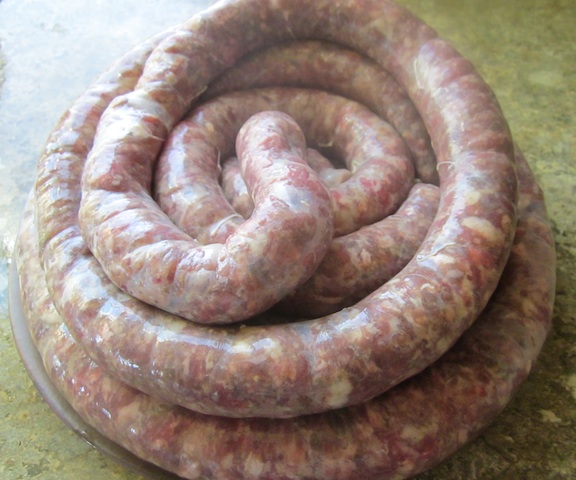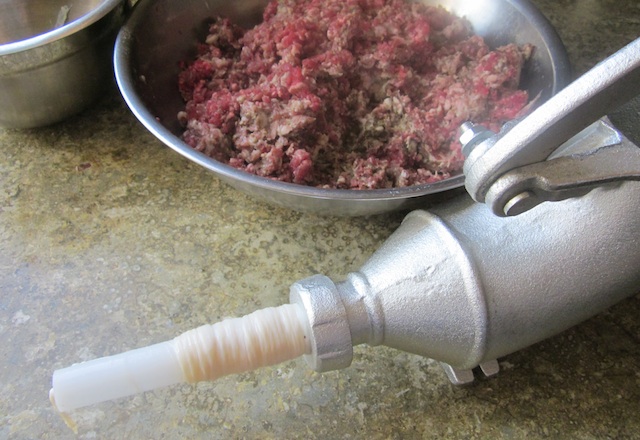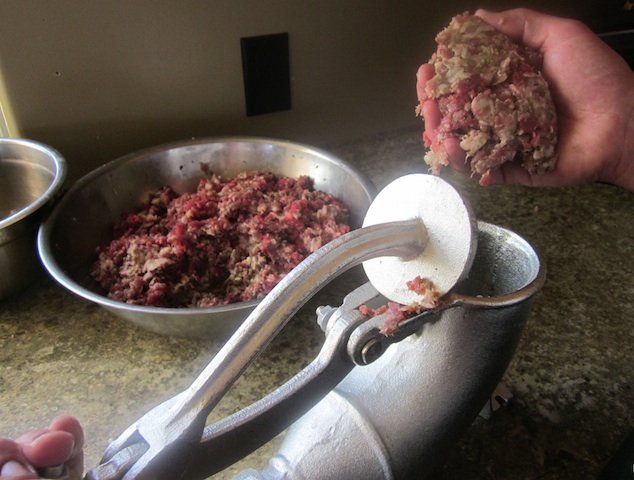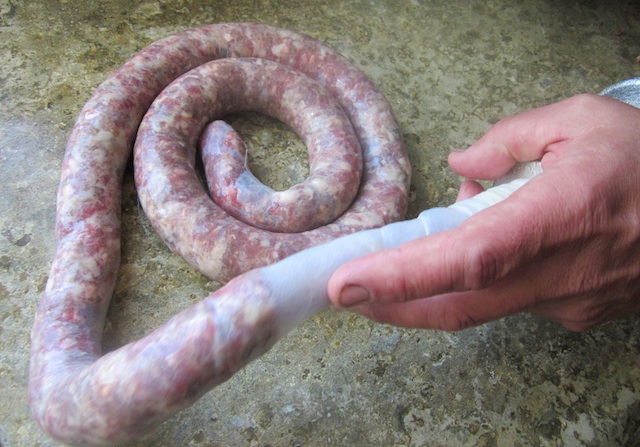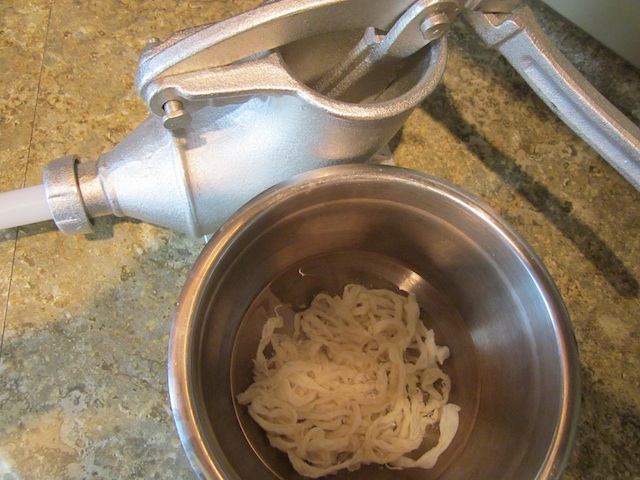
Here is our manual sausage stuffer. The bowl is filled with salted beef sausage casings. They have been soaking overnight. We prefer using natural casings over artificial casings.
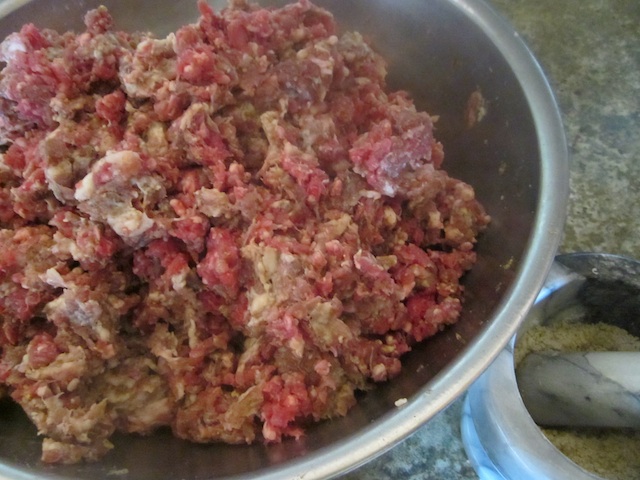
Here is some ground beef and pork meat. The lighter meat is pork and the red meat is beef. I have mixed in the spices and will let the meat mixture sit in the fridge overnight for the flavors to meld.
Homemade sausage requires a lot of preparation and special equipment. After you have made your own sausages it becomes difficult to go back to commercially prepared sausages. They just can’t compete with the real thing!
I consider homemade sausage making a fairly advanced activity. Before trying sausage making I would recommend reading a book like Charcuterie: The Craft of Salting, Smoking and Curing by Micheal Ruhlman.
For specialized equipment you will have to have a grinder or get your butcher to grind the meat for you. Fresh meat is best but frozen meat will work. We use a grinding attachment on our KitchenAid. You will need a stuffer, either a hand stuffer or an attachment for a KitchenAid. We haven’t had good results with the KitchenAid sausage stuffer; the texture was destroyed by the machine overworking the meat. We bought a hand stuffer which works well for us as long as we don’t overfill the machine.
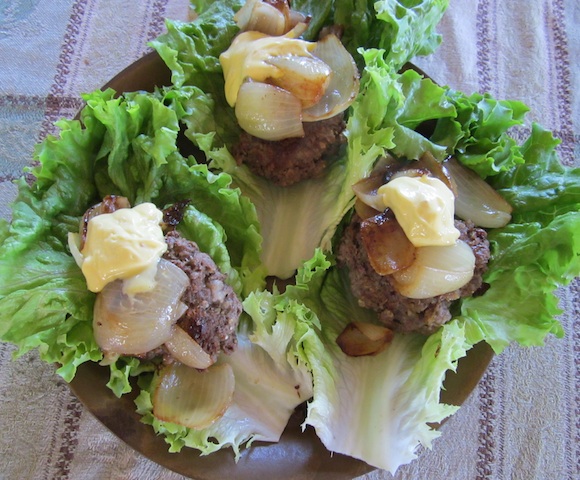
Making sausage patties is a good way to start making sausages. Patties make a easy breakfast. Here are some patties, fried onions and homemade mayonnaise on lettuce leaves.
When we first started making sausages we started with making patties. This requires no sausage casings. After we got the hang of spicing the meat, we ordered sausage casings from Stuffers Supply Company out of Langley, BC. Later, we found out that our local butcher, Kam Lake View Meats (Chop’n Block) had sausage casings for sale.
- Get all your grinding equipment together or have the butcher grind the meat for you.
- Let the salted casings soak in water overnight. If you do not want to use casings, you can just make sausage patties.
- Mix up your meat. We like to mix pork with beef but everyone is different. Decide on your spicing. After spicing your meat, make a few small patties and cook them to ensure the spicing is right. Adjust the spicing if there is a problem. Let your meat mixture sit overnight in the fridge to improve the flavor.
- Get your stuffer ready. This job is easier with two people. Load up the stuffer with the meat mixture. Put the casing over the plastic tube and tie-off the end. Start filling the casing with the meat mixture. Puncture the casing with a needle. You can twist the casing to make sausage links or you can make one long sausage. Over the years, we have been converted over to the long sausage technique. Refrigerate the sausages. Sausages are wonderful grilled, boiled, fried or roasted.

When you first start stuffing the casing use a needle to puncture the end of the casing otherwise the casing will fill with air.

